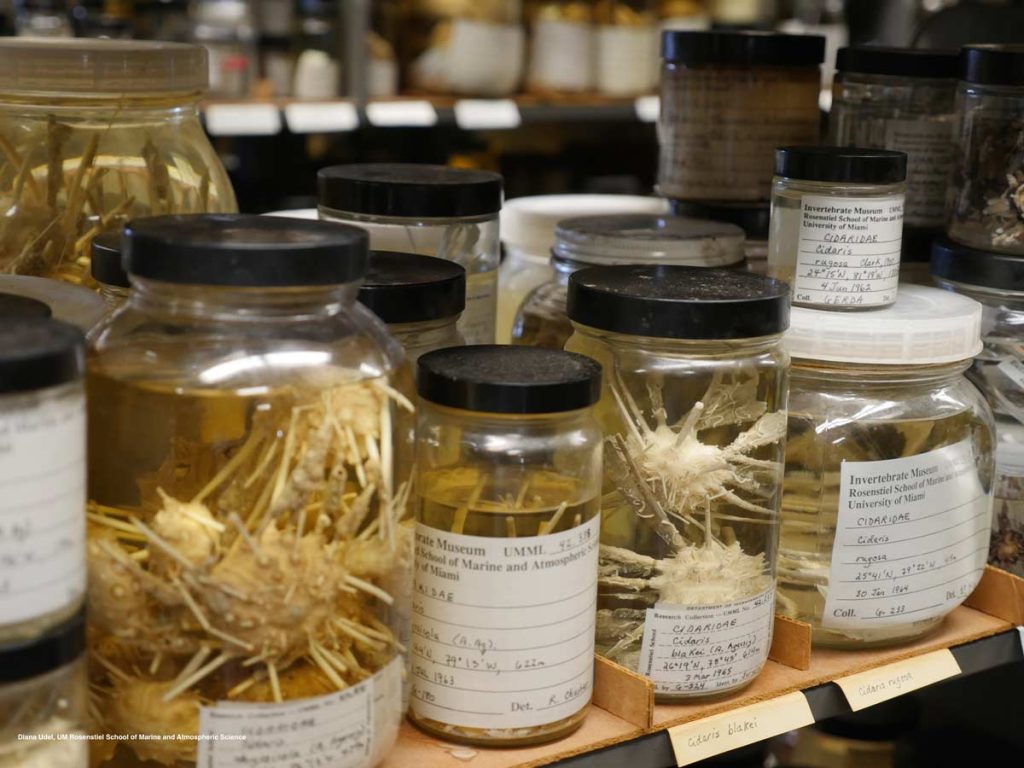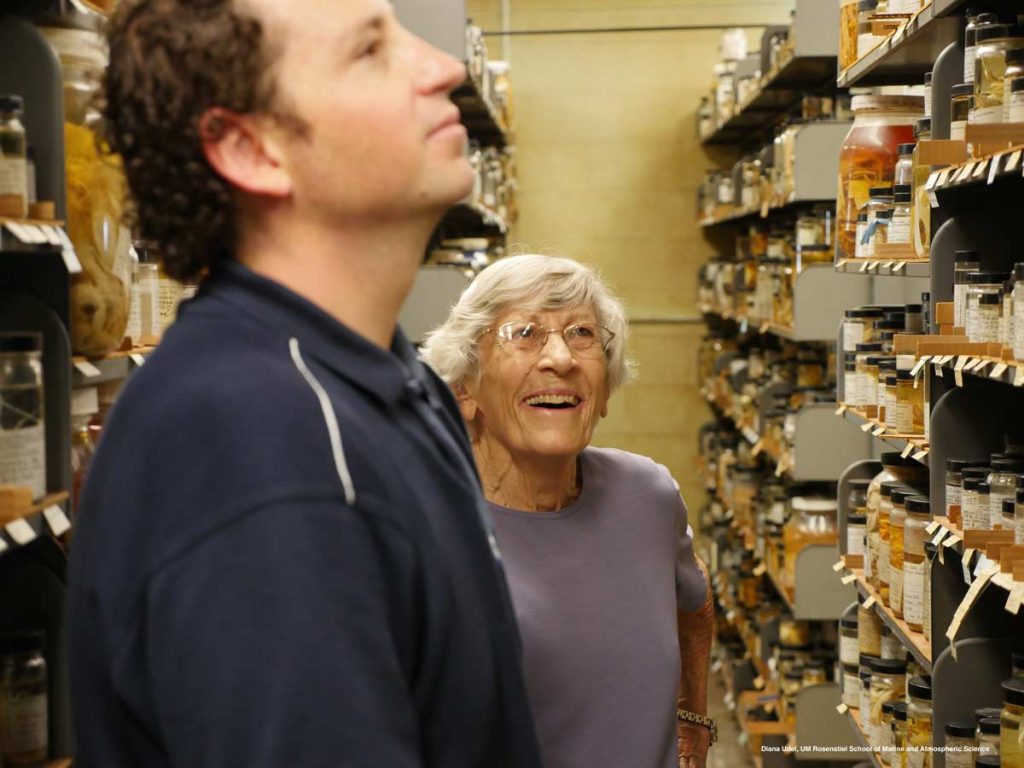

Since the 1930s, UM scientists and students have been adding to a vast collection of marine invertebrate species, considered one of the largest in the world.
Many visitors to the University of Miami campus stroll through the art collections housed at the Lowe Art Museum or thumb through special collections at the Otto G. Richter Library, but few visitors have ever even heard about the rare collections at the University of Miami Marine Invertebrate Museum.
This museum – fittingly housed on the Virigina Key campus of the Rosenstiel School of Marine and Atmospheric Science – not only showcases well-known creatures like crabs, shrimp, starfish and octopus, but also some of the world's most unusual ocean dwellers, from giant sea roaches to giant squid. Except for the cephalopod collection, which is home to preserved squid and octopus from around the world, nearly 100 percent of the other backboneless creatures preserved there are from tropical Atlantic waters.
“These collections continue to be of increasing importance for research in the marine field with each passing year,” says Nancy Voss, M.S. ’54, a research professor emerita at the Rosenstiel School and current museum director.
As one of the largest collections of tropical Atlantic marine invertebrate species in the world, the CITES (Convention on International Trade in Endangered Species)-certified museum has helped identify over 600 new species from the approximately 93,000 preserved specimens it houses, with more likely still waiting to be named.
About the Video
The Rosenstiel School of Marine and Atmospheric Science houses one of the most unique museums at the University of Miami. The Marine Invertebrate Museum on the Virginia Key campus houses thousands of marine life specimens that have been collected over the past 80 years throughout the Caribbean Basin. Video credit: Diego Meza-Valdes.
Join the Conversation:
Follow on
Twitter:
UM Rosenstiel School of Marine and
Atmospheric Science, @UMiamiRSMAS
University of
Miami, @univmiami
UM News, @univmiaminews
The anchor was laid for a marine invertebrate museum in the late 1930s and early 1940s, when sponges in the Bahamas were hit by an infectious disease outbreak.
Concerned, an oceanographer named F.G. Walton Smith decided to investigate the disease. UM’s first president, Bowman Foster Ashe, soon asked Smith to join him in Miami and set up a marine biological laboratory, which would eventually become known as the Rosenstiel School of Marine and Atmospheric Science, with Smith as its founder.
In the late 1940s, Nancy Voss’s husband, Gilbert Voss, B.S. ’51, M.S. ’52, who earned his Ph.D. at George Washington University, was named the first curator of the invertebrate collection. He led student field trips to collect buckets of specimens in order to conduct more in-depth studies of the rich ocean life in and around Biscayne Bay and its reefs. Much of this early work helped form the basis for the school’s current scientific understanding of the ocean environment around Florida and the Caribbean. During the early years of the museum’s founding in 1949 and the initial period of ocean sampling, Rosenstiel School researchers even collaborated with the Cuban government through the use of its Navy vessel, Yara, to conduct some of the first studies of the Florida Current.
In the 1960s, Professor Voss and his UM colleague Frederick M. Bayer, B.S. ’48, were encouraged by Gilbert Grosvenor, the first full-time editor of National Geographic Magazine and first president of the National Geographic Society, to submit a proposal to the National Geographic Society and National Science Foundation to study the entire tropical Atlantic from the surface to its greatest depths in the Caribbean from Florida to the Bahamas, north to Bermuda and east to the Gulf of Guinea off the coast of West Africa. The organizations jointly funded the proposal for the exploratory cruises that took place between 1964 and 1975.
Throughout the years, museum researchers have continued to collect specimens during numerous expeditions along the east coasts of the Yucatan peninsula, Honduras, Nicaragua and Costa Rica; into the Caribbean waters of the Virgin Islands, Puerto Rico and the Dominican Republic; and even in the eastern tropical Pacific.
Notable UM contributions include Donald Moore’s extensive micro-mollusk slide collection from Florida, South and Central America, the Caribbean and the Bahamas, and the coral and other invertebrate samples from the eastern tropical Pacific that current Rosenstiel School Professor Peter Glynn and his students have collected.
(Story continues after photo and video gallery)
And more than 60 years after her involvement as a Rosenstiel School graduate student began, Nancy Voss continues to grow the museum and make sure its treasure trove of marine life remains available for research work and for loan.
Increasingly, says Voss, who is a squid expert, geneticists and medical researchers have been contacting her with an interest in finding new natural products from the ocean that may help cure human diseases. She maintains close collaborations around the world to provide this invaluable invertebrate resource to scientists who are hunting for everything from a species that may hold a potential cure for cancer to a better understanding of the marine environment. In 1995, one of the top specialists in marine worms from the University of Havana did extensive work in the museum’s very large and important polychaete, or marine worm, collection.
So far more than three-quarters of the museum’s collections are catalogued, and Voss hopes to digitize the remainder in order to bring the entire collection to an even larger audience.
Though she receives very little financial support for her work to keep the invertebrate museum operating, Voss believes it is important to maintain the rich repository she and her late husband helped pioneer, both to further scientific understanding and discovery, and because, in her words, “it’s a challenge, and I love challenges.”
- ANNIE REISEWITZ / Special to UM News



